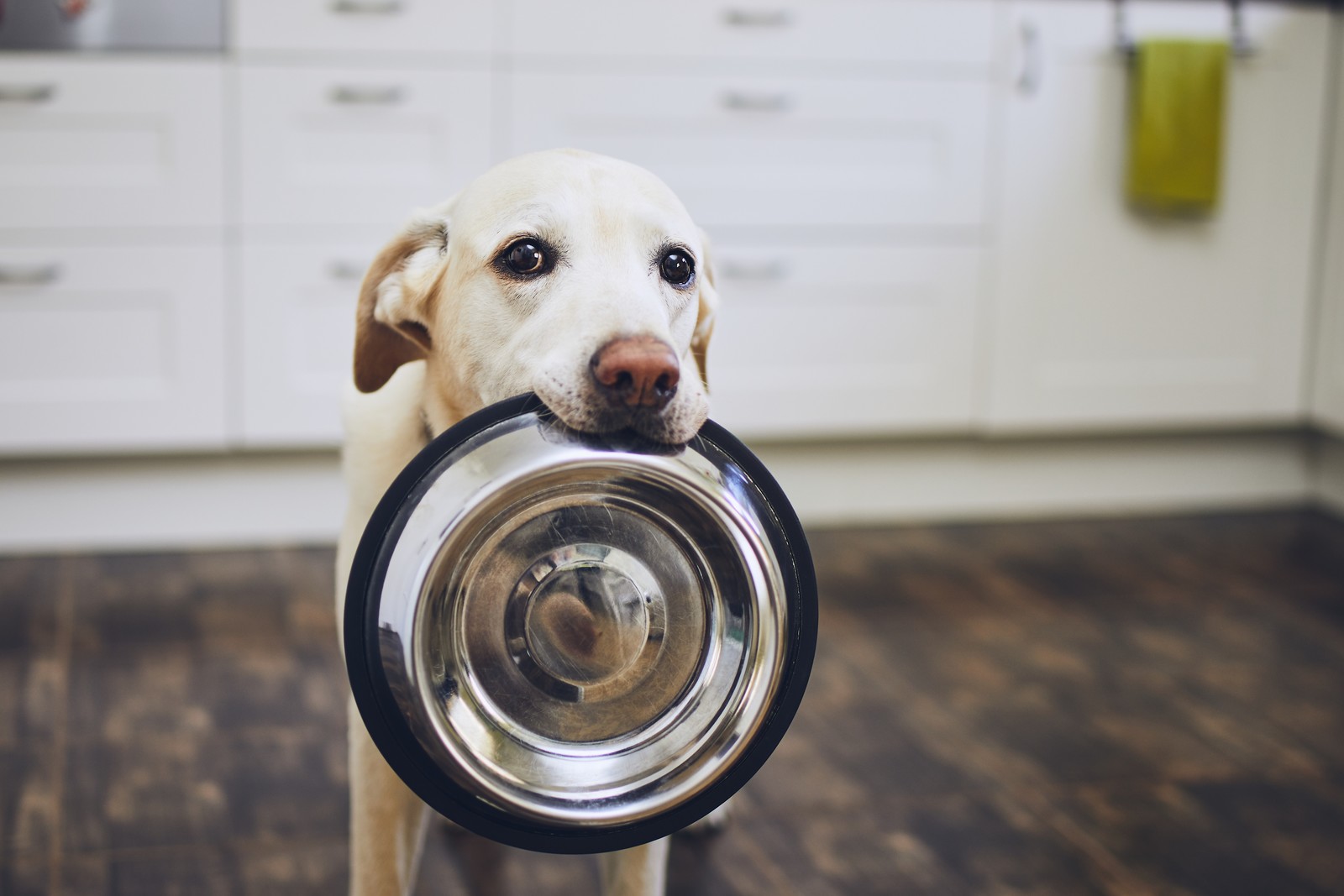by Jill Swan featuring Butch Goodwin
The “leave it” command is one that can be used inside the house and out – in the field or in the city. This is simply good social conduct and a way to prevent your retriever from picking up or getting into anything harmful. For hunting, this command is useful when you want your retriever to drop something it shouldn’t have picked up, or to have him ignore, for example, a dead bird in order to pursue a cripple.
Retrievers are born to follow their noses and to retrieve pretty much anything. But there are times when you don’t really want that. “Some things that dogs consider real ‘prizes’ are often quite disgusting,” says Retriever Journal columnist Butch Goodwin. “Then, you must take it from them just as you would a bumper or bird you have shot, and you must find a way to get rid of it without having them pick it up and bring it back again!” As the owner, you can tell when your retriever has that certain gleam in his eye, indicating that he’s going to go roll in that dead fish over there — unless you stop him with the “leave it” command. Part of the effectiveness of leave it is anticipating what your retriever will do.
Goodwin relates a more personal, at-home example. While unloading the dishwasher, he accidentally dropped a plate, which shattered all over the floor. Upon the plate falling, his three dogs came running into the kitchen. He told them, “Leave it!” to prevent them from stepping on or eating any of the pieces.
This command is simple, and Goodwin offers straightforward instructions on how to teach it, based on the assumption that your dog is force-fetched and will fetch on command consistently. Goodwin uses a prong collar and an eight-foot lead for the drills. “Line up four to six white bumpers, spaced about three yards apart. Walk your dog over the bumpers and command him to ‘fetch’ each one individually. After he’s fetched each bumper and returned to the ‘heel’ position, place the bumpers back in their original locations and tell him to ‘leave it,'” explains Goodwin. You may have to use the leash to keep his head from lunging at the bumper he thinks he’s supposed to pick up. “When this drill is solid, walk over the bumpers are before, but this time randomly command him to ‘fetch’ or ‘leave it’ as you approach each bumper.” If the dog goes after a bumper he is supposed to leave, retrain him and say ‘leave it’ again. The dog may begin to refuse to pick up a bumper, so it’s important to reinforce “fetch.” The dog needs to learn that not everything is supposed to be picked up. Continue this drill until the dog is consistently fetching or leaving the bumper on command.
“‘Leave it’ needs to be taught in a controlled training situation,” he explains. “Once the dog is reliable and you are sure he understands what is expected of him, if it is possible, he needs to be set up – away from bumpers or birds – and given the command and nicked with an e-collar if he doesn’t respond.”
If your dog has a particular vice or habit, such as rolling in dead fish or eating garbage out of the trash can, then once he is reliably trained, place him in that exact situation to test him. “Command him to ‘leave it’ and if he doesn’t respond, nick him with the collar and follow it up with, ‘Leave it’ again,” says Goodwin. Take the dog to other environments where his attention will be drawn to something you want him to leave and follow the same procedure. Eventually, he’ll understand that no matter what, he must leave it when told. Again, it’s important to rotate in and reinforce the “fetch” and to not overdo the “leave it” command. As soon as the dog is reliable with other random objects, begin using birds along with bumpers and do the same drill.
Upon hearing, “Leave it,” a dog should noticeably stop paying attention to whatever captured its attention in the first place. This command signals to him that it’s time to move on. For Goodwin, he expects his dogs, once hearing the command, to proceed with what they were doing before. If he’s hunting pheasants, then the dog should go back to hunting pheasants.
It’s also essential to keep practicing the command so that the dog(s) stay sharp. Goodwin sometimes does this at home using popcorn as bait. “Sometimes, I will drop a piece of popcorn on the floor and tell them to leave it — now I have a couple of big ol’ drooling Chesapeakes standing or sitting there almost like they are on point, intently watching this piece of popcorn on the floor like it’s going to get away!” A dog can pick up the popcorn once its name is called.
The most important thing to remember? “Be sure to stay away from nicking him around bumpers or gamebirds, or he might get the idea that the bird or bumper has ‘stung’ him and might not want to hunt or retrieve them anymore,” says Goodwin. Otherwise, you will have a whole new problem on your hands.
The “leave it” command is useful anywhere, for any situation. Goodwin says it might be the most common command he uses. It keeps the dog safe and out of trouble and makes life easier for its owner.






